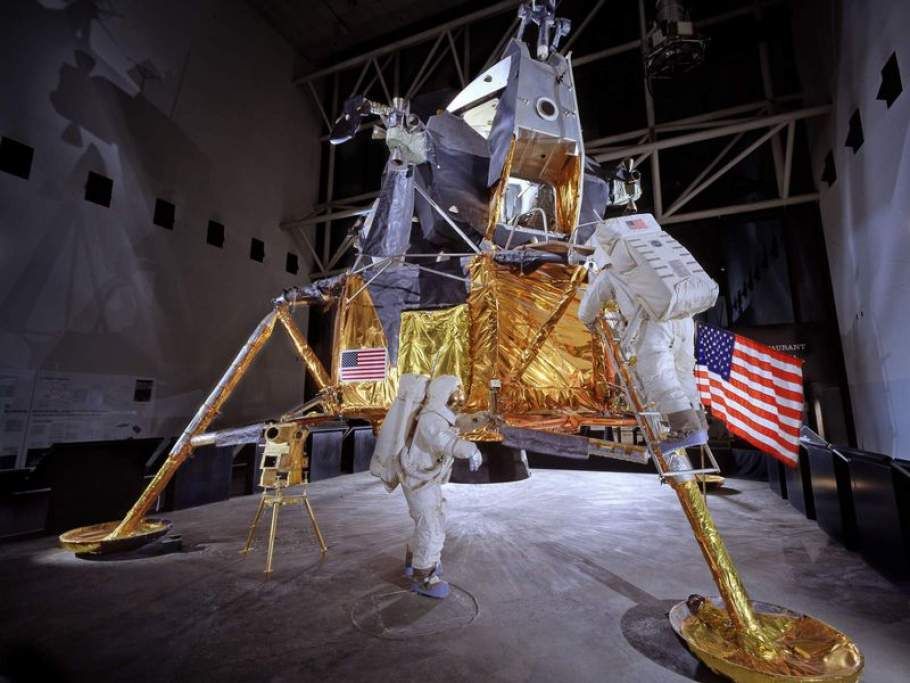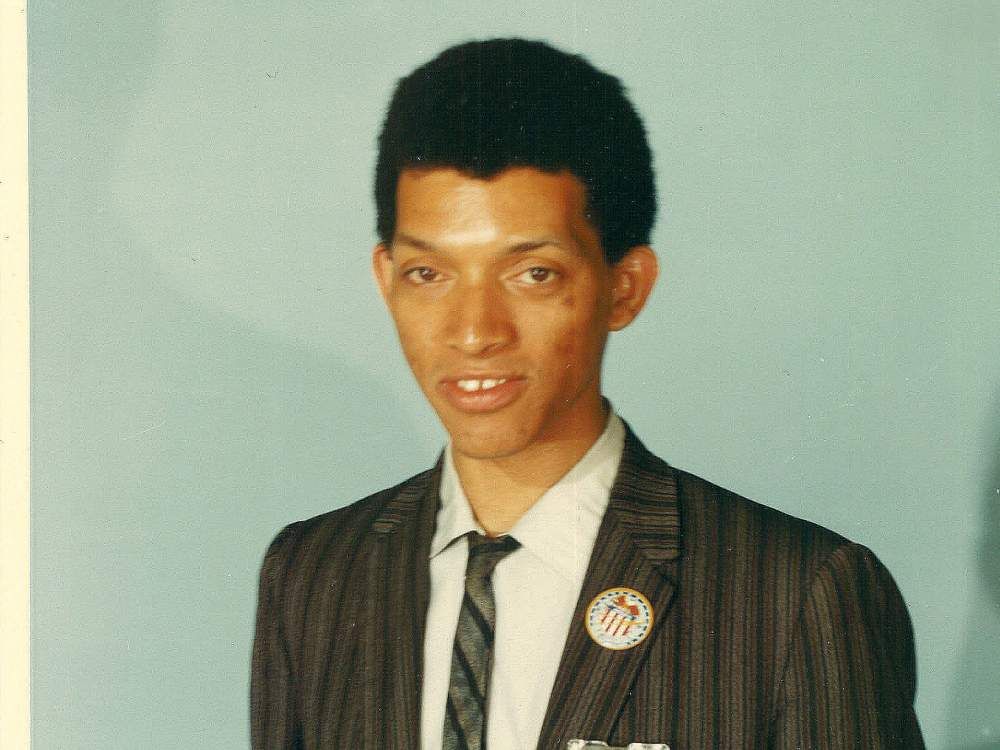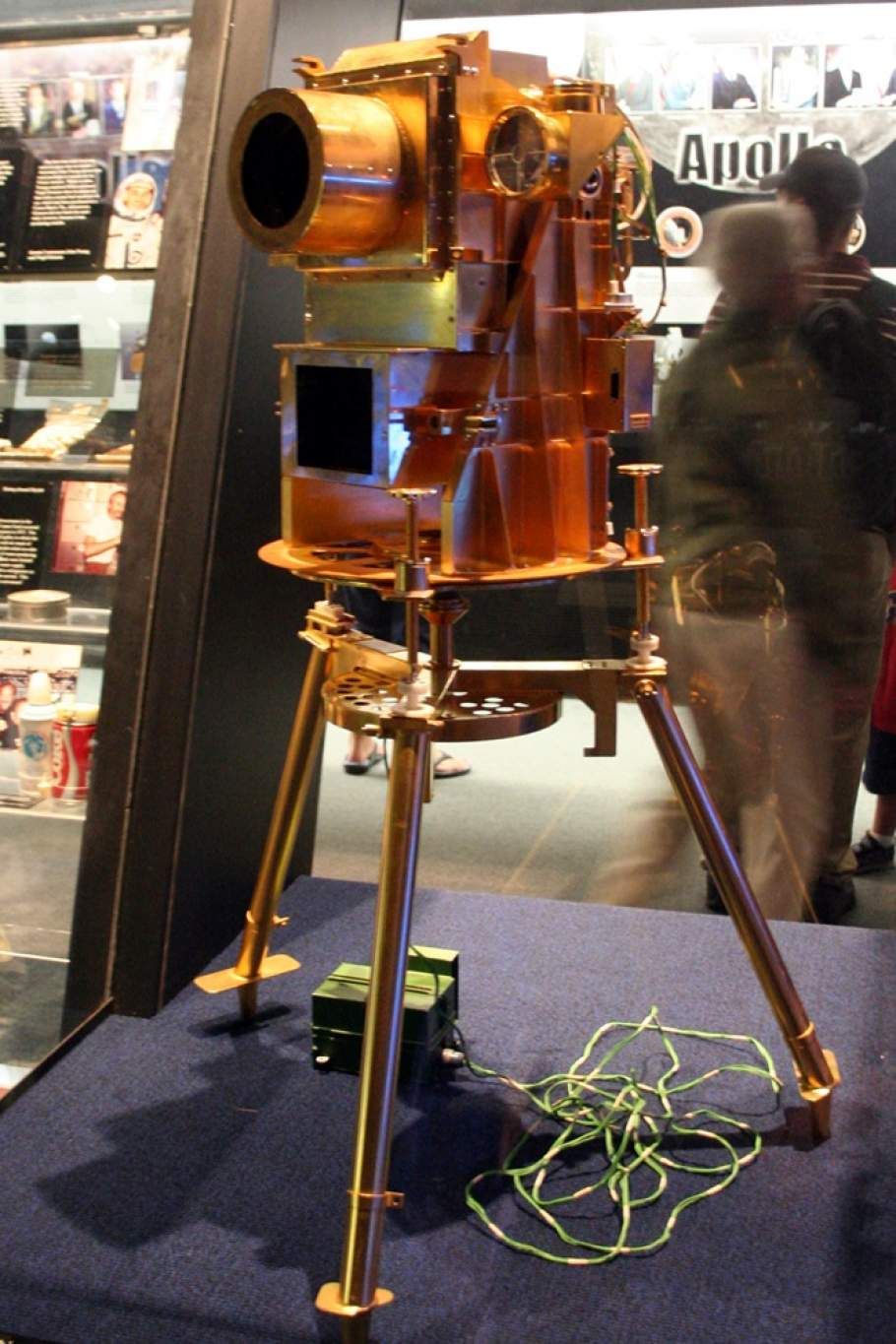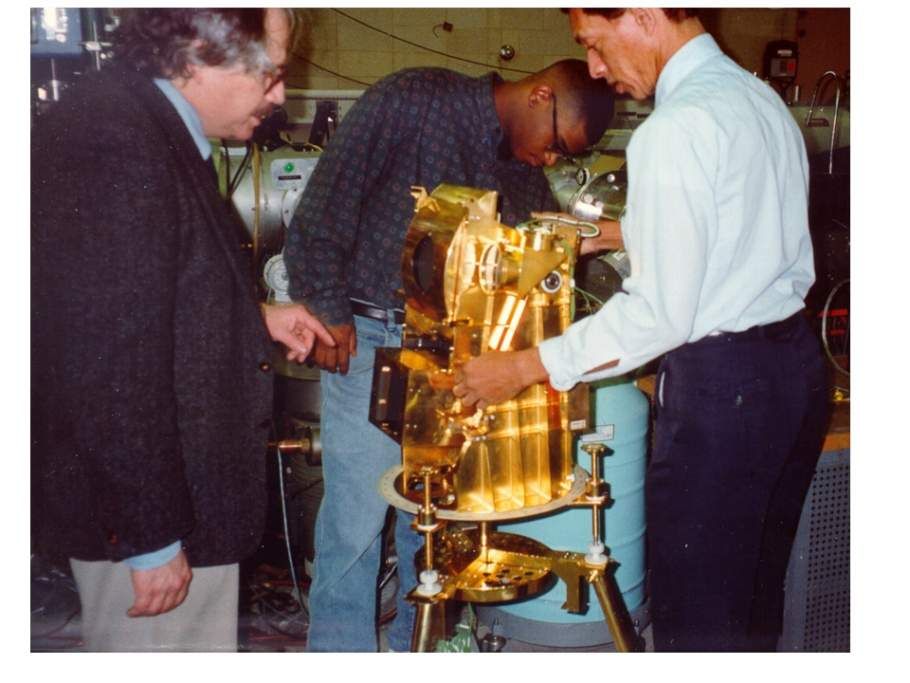George Robert Carruthers: Astronautical Engineer and Astronomer
Astronautical engineer and astronomer George Robert Carruthers, a name well-known and dearly regarded in the space science community, and a good friend of the National Air and Space Museum, passed away on Saturday, December 26 after a long illness.
:focal(500x375:501x376)/https://tf-cmsv2-smithsonianmag-media.s3.amazonaws.com/blogging/featured/crop_Carruthers_with_Film_Cas_1972.jpg)
Astronautical engineer and astronomer George Robert Carruthers, a name well-known and dearly regarded in the space science community, and a good friend of the National Air and Space Museum, passed away on Saturday, December 26 after a long illness. His fame derives in part from the fact that he developed and built a compact and powerful ultraviolet electronographic telescope, which became the first (and still the only) astronomical instrument sent to the Moon. It was placed on the lunar surface on Apollo 16 in 1972, and it performed extremely well, leading to enhanced knowledge of the Earth’s outermost atmosphere and of the vast spaces between the stars and galaxies invisible to the eye.
The flight-backup of that astronomical instrument was first displayed at the Museum in the mid-1990s. It was first set out on the lunar surface of our Apollo Lander exhibit on the east end of the building next to the Lunar Module LM-2, and more recently in the Apollo to the Moon gallery, safely protected in a sealed vitrine. After several years however, collections care specialists noticed upon inspection that it gave off an acrid odor. Something was decaying. A 2016 blog describes the Museum’s efforts to restore the film cannister, which was the suspected culprit.

Now, with his passing, we want to better appreciate the man who built the machine. Carruthers was born on October 1, 1939, in Cincinnati, Ohio, the first child (of four) of George Archer Carruthers and Sophia Singley Carruthers. His father was a civil engineer at Wright Patterson Air Force Base, but early on he moved his family to a small farm on the outskirts in the town of Milford. Although he had chores around the farm, such as helping his mother with the chickens, George was always quiet and focused, devouring space travel comics, books from the library, and later Colliers’ series on the dream of spaceflight. By the time he was 10 years old, he built his first telescope from lenses he saw for sale in an astronomy magazine.

After George’s father suddenly died in 1952, his mother took the family to Chicago to stay with relatives, and he carried his dreams of space flight along, nourishing them at the Adler Planetarium and elsewhere. Although he had an avid interest in science and space, he was more successful in science projects and competing in science fairs than in formal classes. George always went his own way. But mindful teachers recognized his brilliance, and he was propelled to college at the University of Illinois, Urbana-Champaign, where he brightened up in the laboratories and dutifully worked through his undergraduate years and graduate years, receiving a PhD in aeronautical and astronautical engineering in late 1964.
As George was completing his thesis in experimental plasma dynamics trying to better understand the forces rockets and missiles experience in the upper atmosphere, he also spent his summers back home experimenting with plasma engines for small rockets. These interests and activities propelled him to the Naval Research Laboratory (NRL) after graduation. Still working on his thesis, George applied for an NRL postdoc in Herbert Friedman’s newly-created Hulburt Center Associate Program sponsored by the NSF. When he gave a lecture there about his thesis research, he was immediately accepted, first as a postdoc candidate in December 1964, and then, after two postdoctoral years, as a full staff member in 1967. He remained at NRL until 2002, retiring as a senior astrophysicist in the Space Sciences Division.

The camera that George designed, built, tested, and patented in the 1960s met all the requirements for an Apollo lunar surface experiment. It was small, lightweight, powerful, easy to use, and, most of all, had to be operated by a human and required that the individual bring home the goods. It was an electronically amplified photographic camera. Decades before the advent of powerful solid-state sensors, photo-chemical photography was the main means of faithfully recording images that could yield scientific data. Yet, photography was highly inefficient. So, to view faint objects in the heavens, a bigger telescope was needed. A larger telescope would not fit on sounding rockets, satellites, or Apollo, however. The most competitive solution was to find a way to amplify the incoming light signal so that photographic recording was possible. That’s what George did. He didn’t invent the concept, but the design he applied proved to be highly efficient, reliable, and easy to use.
Because Carruthers’ camera designs required that the instrument return to Earth to be studied, his work in the 1970 and 1980s focused on space missions that were human operated. However, by that time, the solid-state revolution had produced purely electronic sensors, charge-coupled devices (CCDs) that could relay imaging data to Earth efficiently and reliably.

George reacted to this sea-change in technology in several ways. His detectors had wider fields and spatial resolution than the first CCDs, but he knew that the CCDs soon would compete. Still, he adapted his designs using CCDs rather than film to achieve even more powerful and useful ends. He also increasingly reached-out beyond his laboratory to inspire young minds to get involved in his never-ending quest to create new tools to explore the universe.
After his Apollo success in 1972, his notoriety from being the man who sent the first astronomical camera to the Moon made him very attractive to the dedicated groups that were campaigning to make science, technology, and engineering accessible to people of color. He became a symbol and conduit for their efforts, helping them change from debating on how to do it, to actually doing it.
Indeed, by the 1990s, George Carruthers devoted more and more of his life and energies to mentoring students in and around Washington, D.C. Fostered by administrative staff at NRL and NASA, he was constantly sought out to give lectures and address classes, and he became active in a number of STEM organizations, starting with the National Technical Association (NTA) that had been promoting science and engineering literacy among African Americans since the 1920s. Carruthers joined a chapter in 1978, writing short essays and notes keeping readers updated on opportunities in aerospace. He became editor of their Journal and remained with the NTA until 2013.

George also brought students into his laboratory to experience research in real-time. In the 1980s, he took part in creating what was called the “Science and Engineering Apprenticeship Program,” (SEAP) which supports summer co-op students to work and be mentored by NRL scientists to experience and appreciate science firsthand. Added to this, and to his NTA work, in the late 1980s, he was encouraged by Valerie Thomas to join a local activist organization, “Project S.M.A.R.T.,” created by Congressman Mervyn Dymally, who chaired the Congressional Science and Technology Subcommittee. Carruthers engaged in a wide range of activities often orchestrated by Thomas and others, including public observatory viewings at Howard University, monthly Saturday speakers, and S.M.A.R.T. Day programs at our Museum.
George was no stranger to the Museum. I was always amazed with his outreach activities when he met with students in small groups, helping them appreciate what it feels like to experience space science, talking with them as a peer, not a professor. He was very obliging in the 1990s when we asked him to restore the flight backup instrument that we had in storage so that we could display it. He not only restored it beautifully but added the flown film cassette that he had in his storage room, which eventually emitted an acrid but harmless smell. One of the most touching parts of the story is that he had students who were in his laboratory at the time helping him conduct the restoration.
Over the years, Carruthers has received numerous awards and honors for his work. Notably in 2013, he was awarded the 2011 National Medal for Technology and Innovation by President Barack Obama.
David H. DeVorkin is Senior Curator for the history of astronomy at the National Air and Space Museum. Portions of this blog derive from a manuscript biography he is preparing on the life of George Carruthers.
